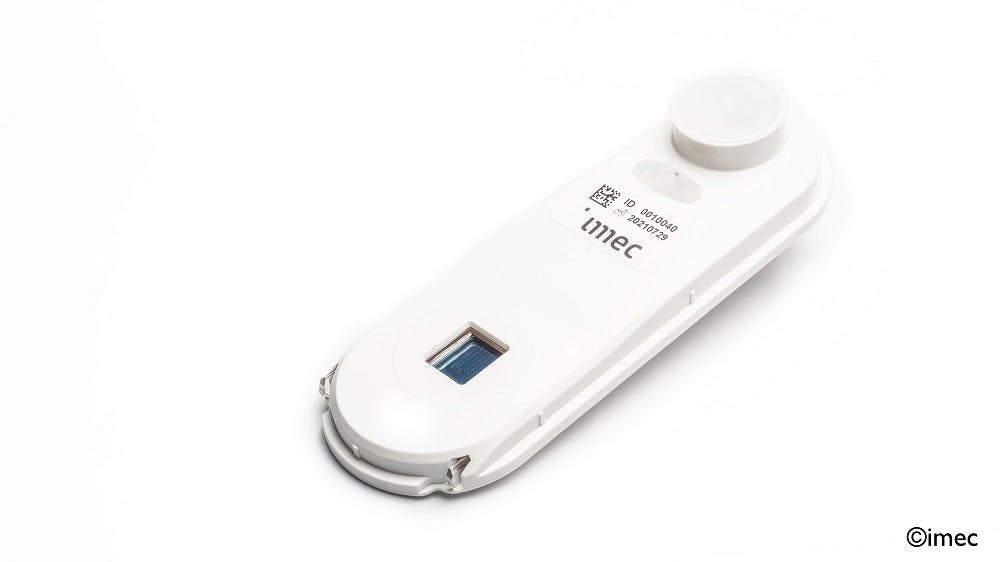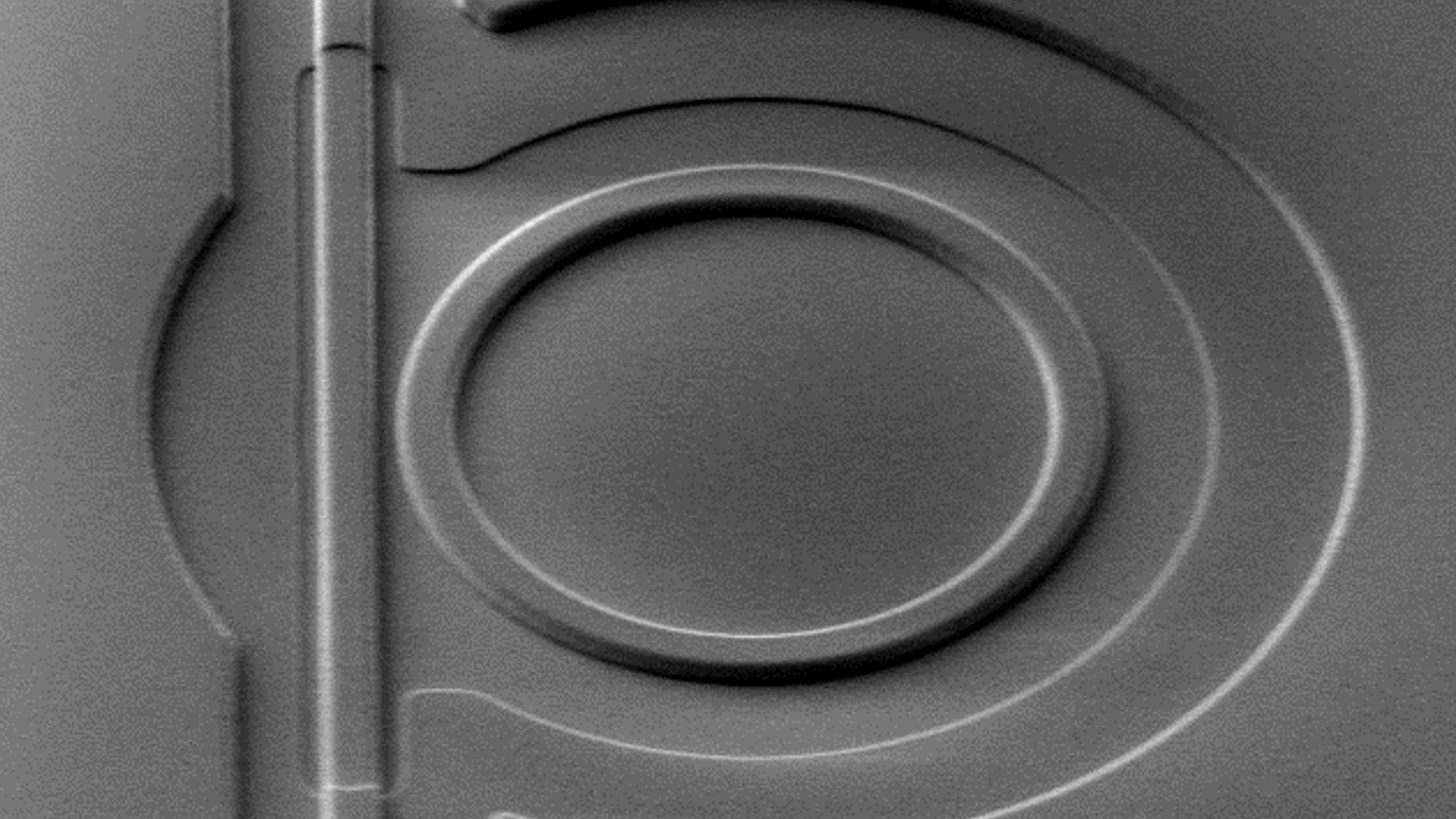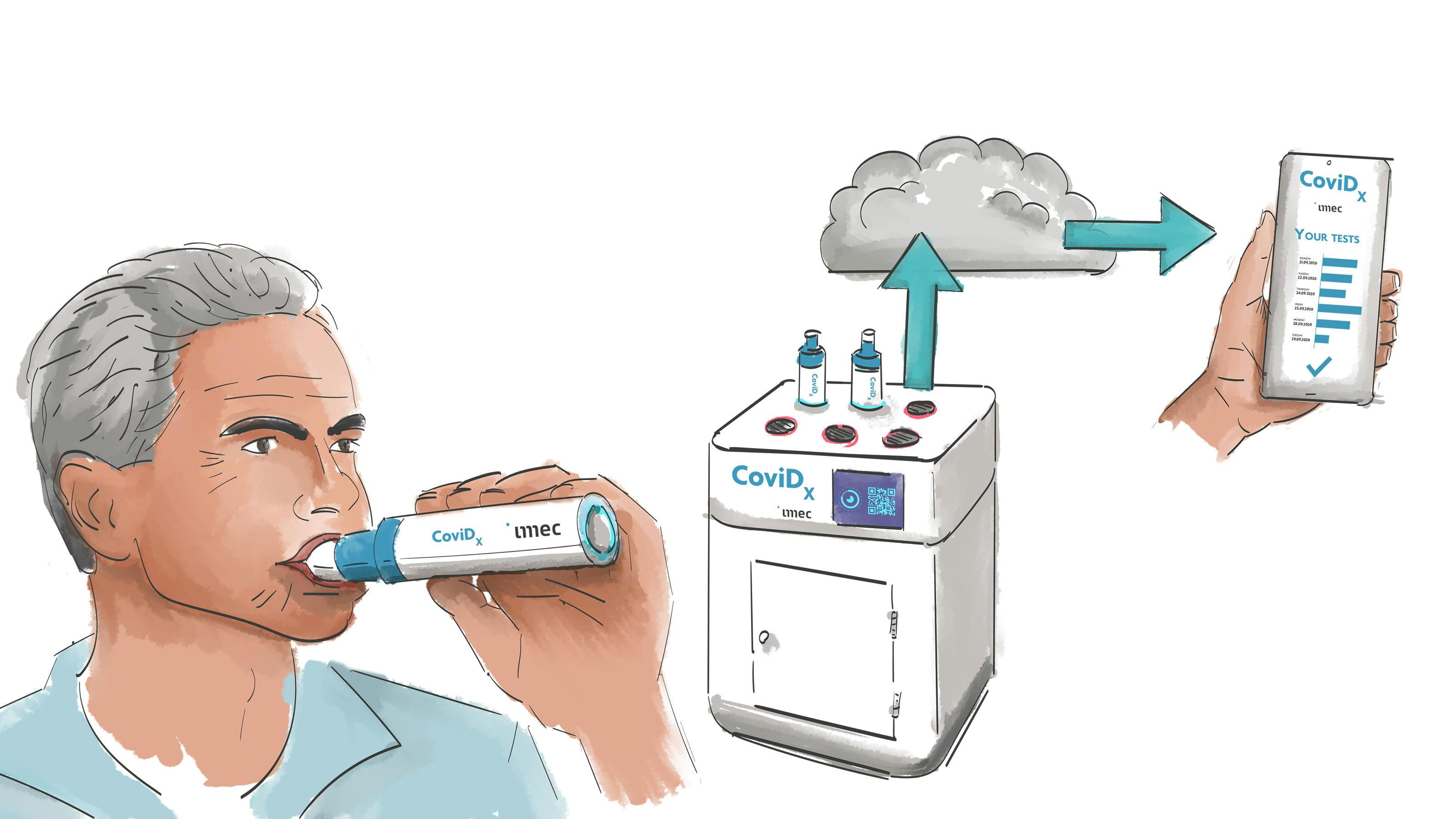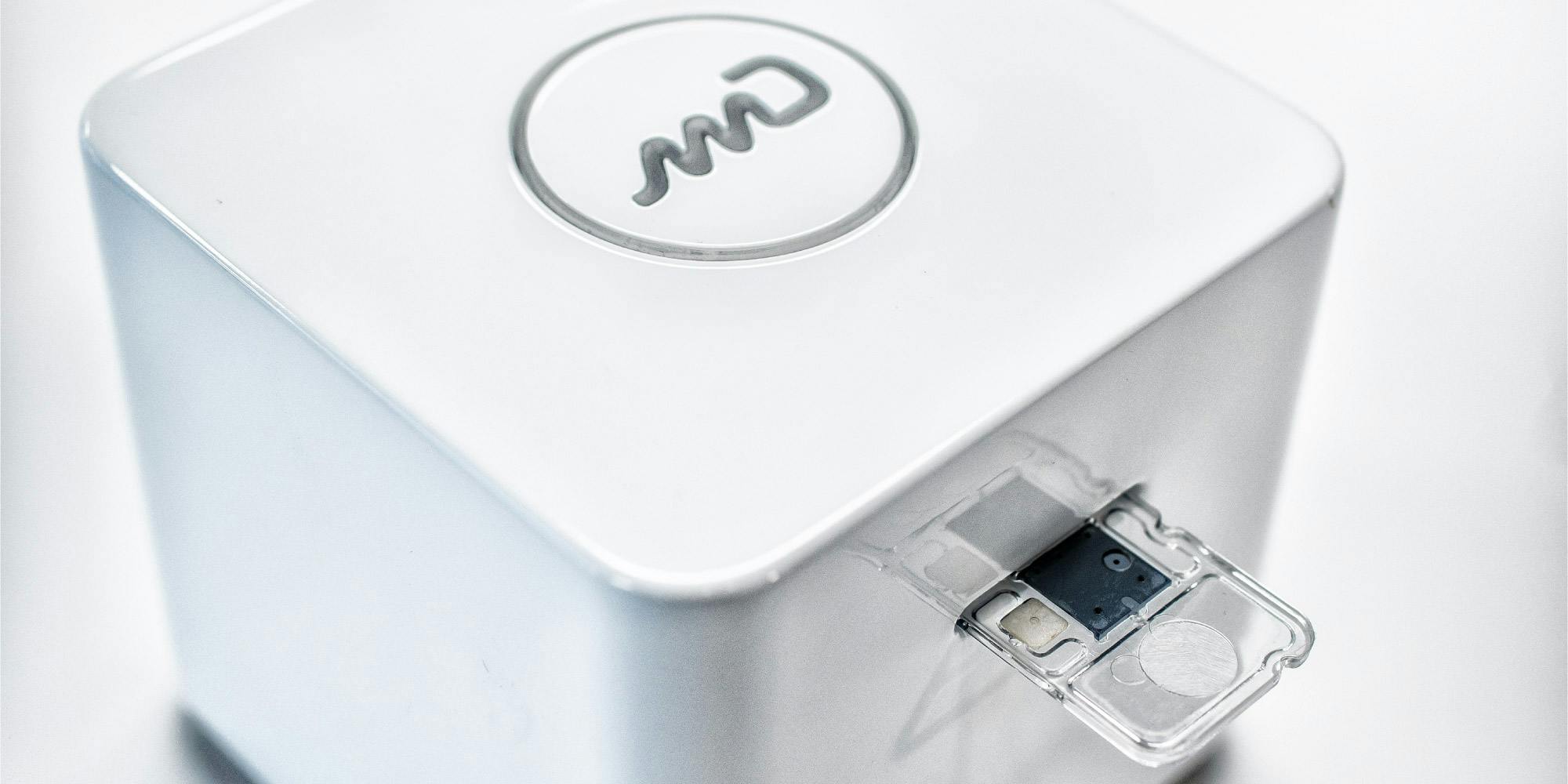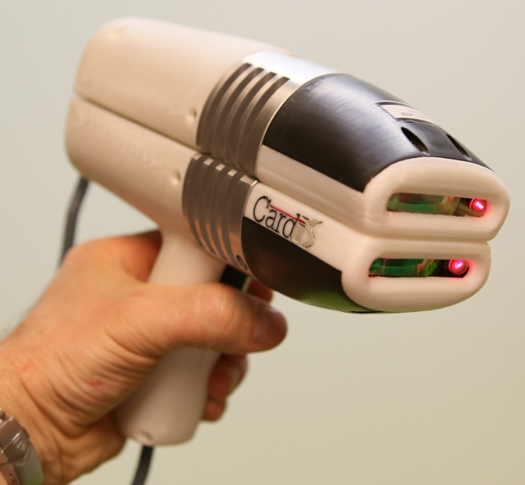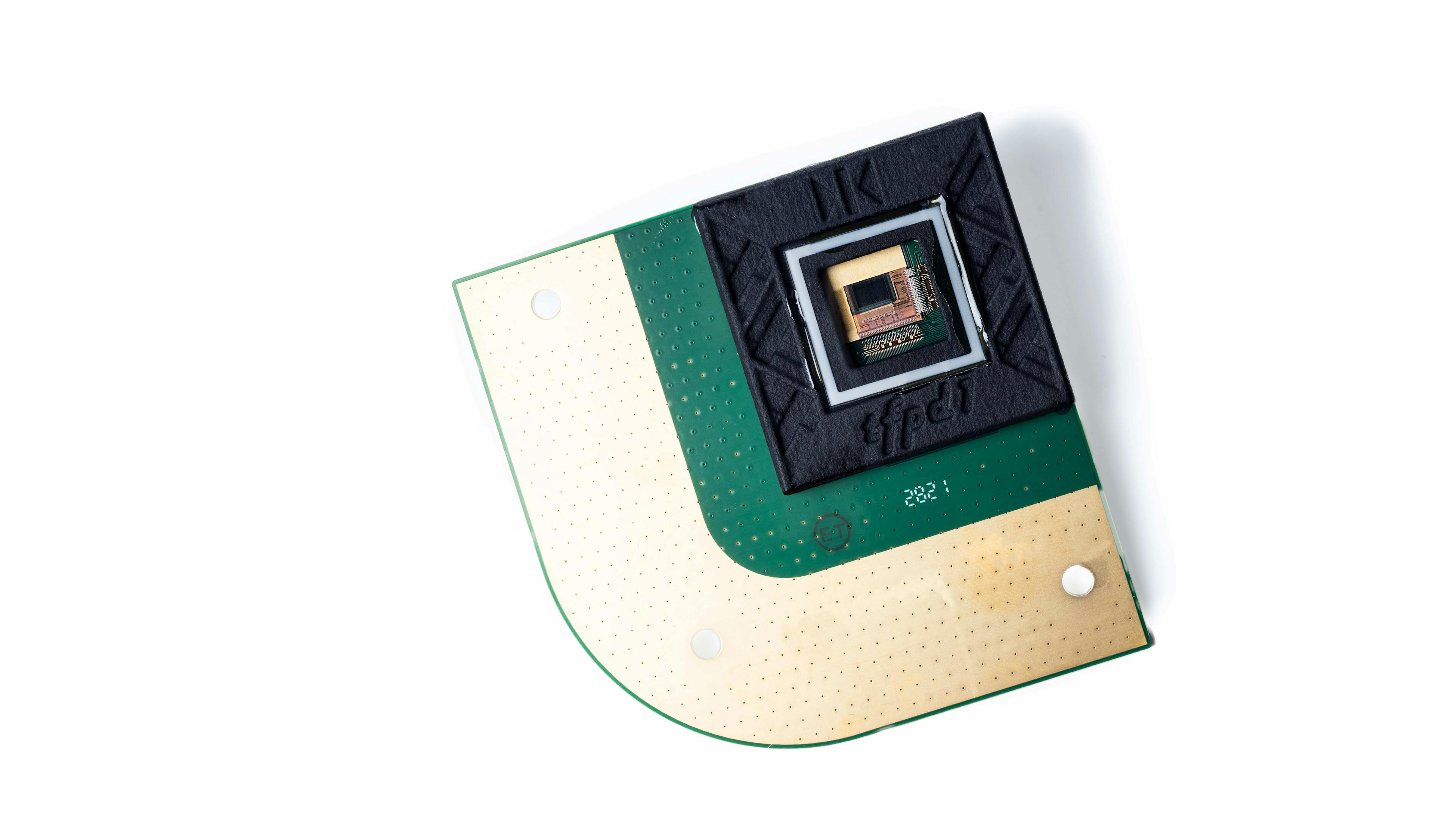
COVID-19 breath sampler
Breathe and wait no more than 18 minutes for an accurate result. That’s the experience that imec aims for with its COVID-19 testing tool.
Testing, testing, testing. From the outset of the COVID-19 pandemic, it was clear what was one of the most effective routes towards a normal life.
Widespread, daily testing is essential for assessing the spread of a pandemic. And by quickly identifying and isolating contagious colleagues, customers, concert-goers, ... we should be able to limit its economic and social impact.
But especially when it comes to that second objective, current testing methods fall short. With its coronavirus breath sampler, imec aims to remedy those shortcomings and introduce fast, easy and accurate identification of viral diseases that are transmitted by exhaled particles.
Imec strongly believes in the power of aerosols for diagnostics and for gaining insights in disease transmissions. That's why this new test is not based on exhaled volatile organic compounds (VOCs) but on RT-qPCR. This last technique is also practiced in clinical laboratories to achieve high sensitivity and specificity.
Watch the video to see how the new test combines the ease of a breath sampler with the sensitivity of a PCR analysis.
Use cases
A breath-based testing device that's derived from imec's breath sampler concept will be:
- easy and comfortable to use
- sensitive, even in the pre-symptomatic stage
- fast, with test results within 18 minutes
That makes it ideal for use in airports, to prevent the global spread of new variants. It's also perfect for preventing infections in setting such the the workplace, mass events, ...
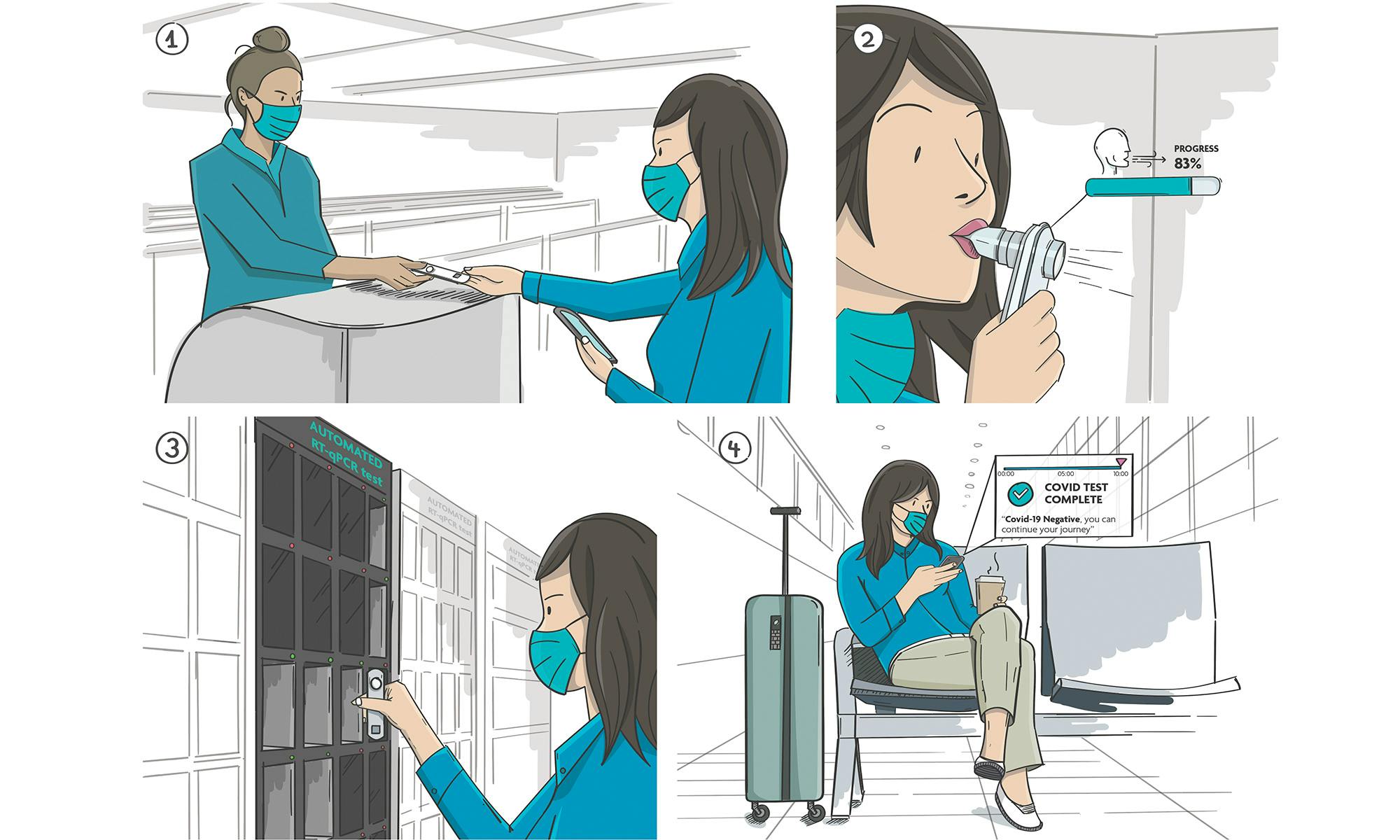
Drawbacks of current tests
The novel coronavirus is only contagious for a relatively short period of time – mostly before the patient develops symptoms. That makes it a challenge to identify spreaders of the disease.
Current testing methods can’t adequately ascertain whether someone can pass on the virus:
- PCR tests are in danger of lagging behind the facts because they typically come with hours or even days of processing time in a clinical lab.
- Serological tests also come too late because they only detect whether someone has developed antibodies.
- Rapid antigen tests are not reliable enough.
Current test methods come with other drawbacks as well. The nasal swabs used for PCR and rapid antigen tests are experienced as uncomfortable to say the least. And PCR and serological tests need to be administered by medical personnel.

Current coronavirus testing methods come with many drawbacks.
Test results within 18 minutes
Imec leverages silicon chip technology to develop a new testing approach. We've developed a breath sampler that detects COVID-19 viral particles that are contained in aerosols and droplets.
Features:
- convenient self-sampling without need for trained personnel to ensure proper handling
- easy procedure, even for small children
- high sensitivity and specificity, due to use of the PCR testing method
- good measurement of actual contagiousness, because it's based on a breath sample
- rapid process: 1 minute for the sampling, less than 15 minutes for the analysis
- versatile platform: extendible to other respiratory pathogens, soon te be studied
Explore this article for more details about imec’s coronavirus breath sampler.
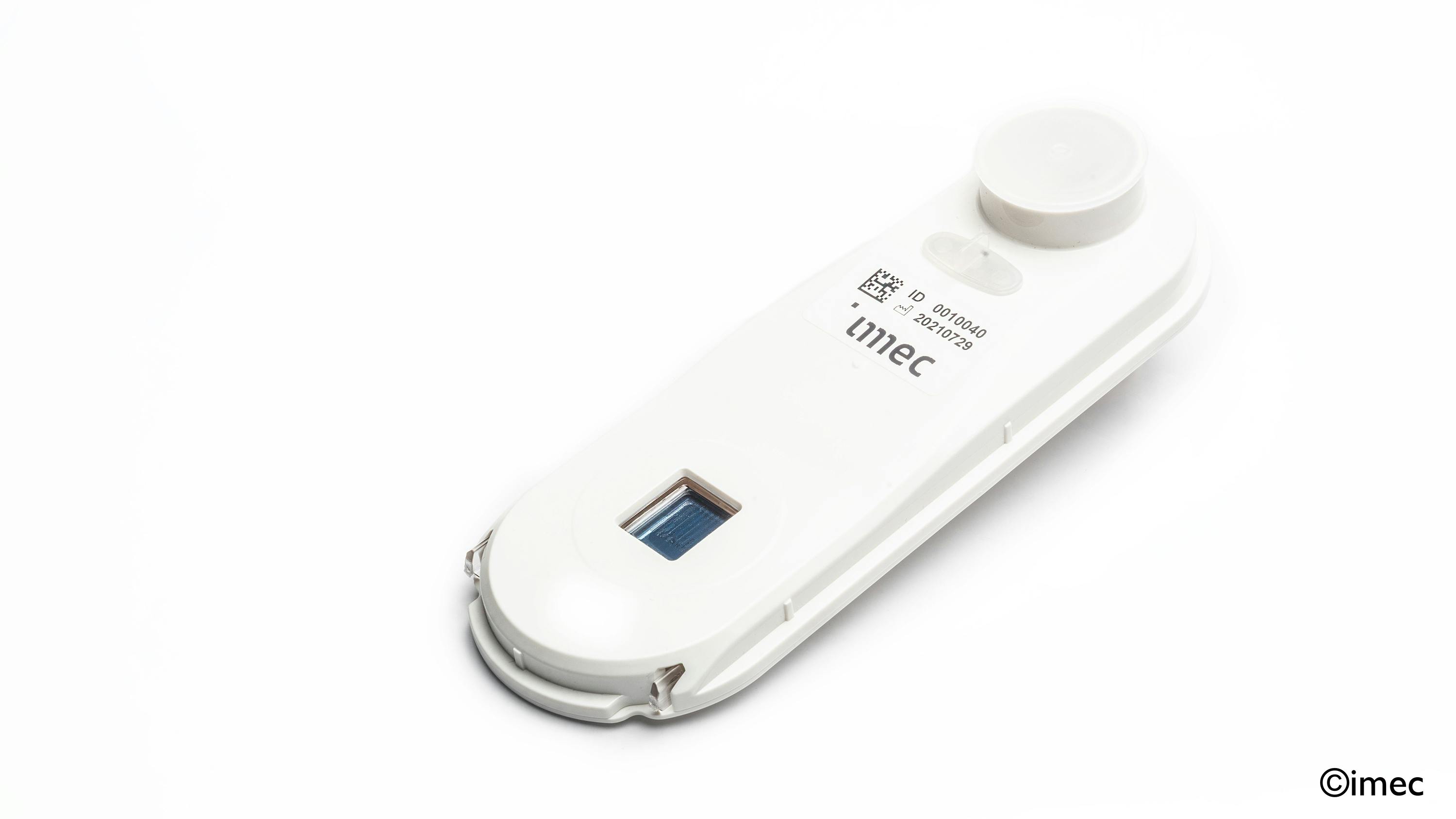
A prototype of the proof-of-concept breath sampler.
Coronavirus breath sampler: current status
Imec performed several clinical studies and submitted the results for peer review. We can share them with you under an NDA. The graph below gives you a glimpse of the results.
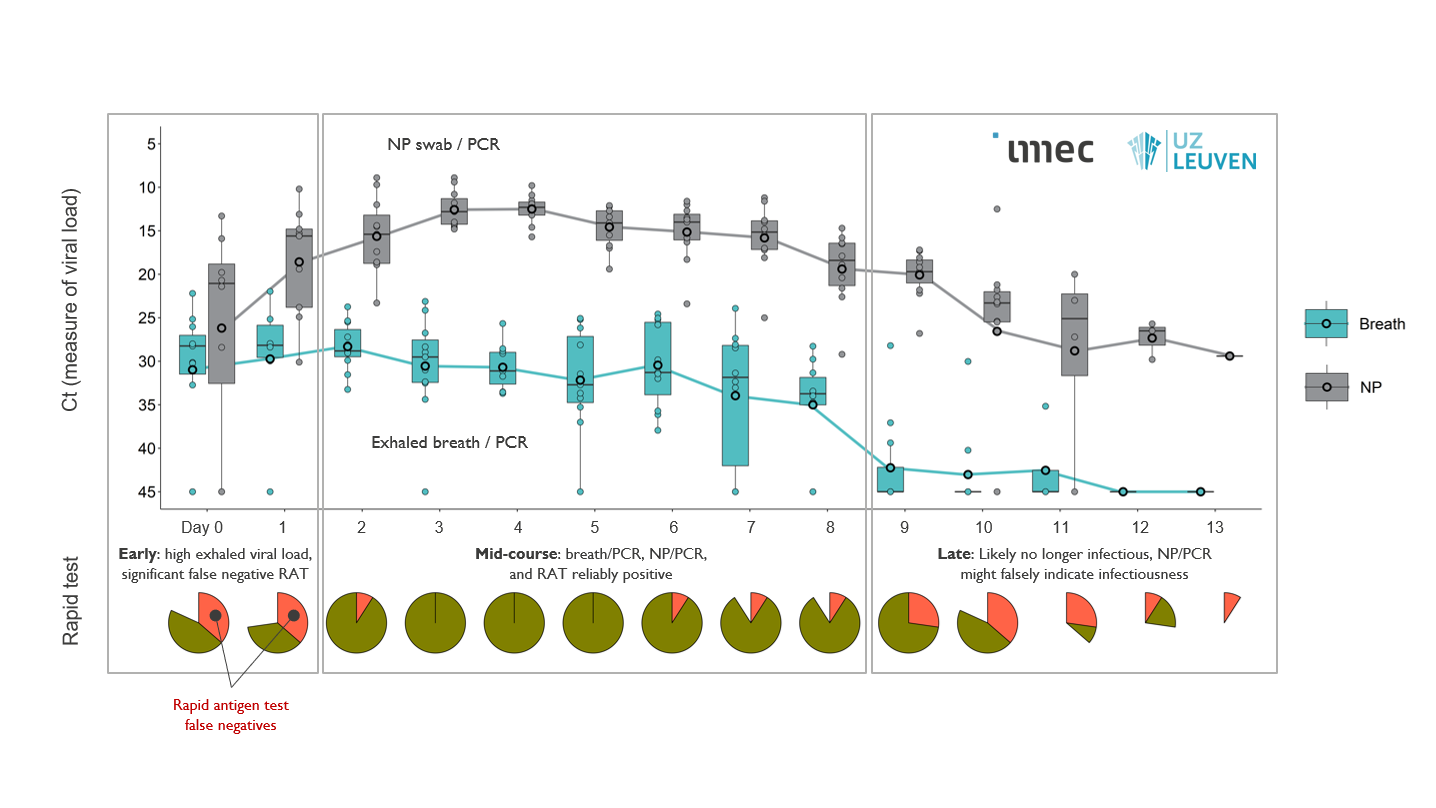
Viral load as a function of day since infection as measured using an RT-qPCR on a nasopharyngeal swab sample (grey) and breath (cyan) for a cohort of 13 subjects. From day 9 on, people test negative with a breath-based test while still testing positive with a nasopharyngeal swab-based PCR test. Data for contemporaneous rapid antigen tests are shown below the graph with the green color representing the patient group that tests positive for SARS-CoV-2, red the negative-test group and white the group with missing results. The pie charts show that the rapid antigen tests in many cases give a negative result at the beginning of the infection while people are already infectious and can spread the disease. The new breath-based PCR test is as easy and fast as the antigen test but is much more accurate, especially during the first days of infection.
Because this solution is based on standard chip technology, it’s mass-producible. It can be quickly made accessible in unlimited amounts to fight the human and economic effects of COVID-19 – and of future pandemics that spread via exhaled particles. We're also looking at applications beyond covid, such as other infectious diseases or cancers.
Want to get involved in this project? Feel free reach out.



